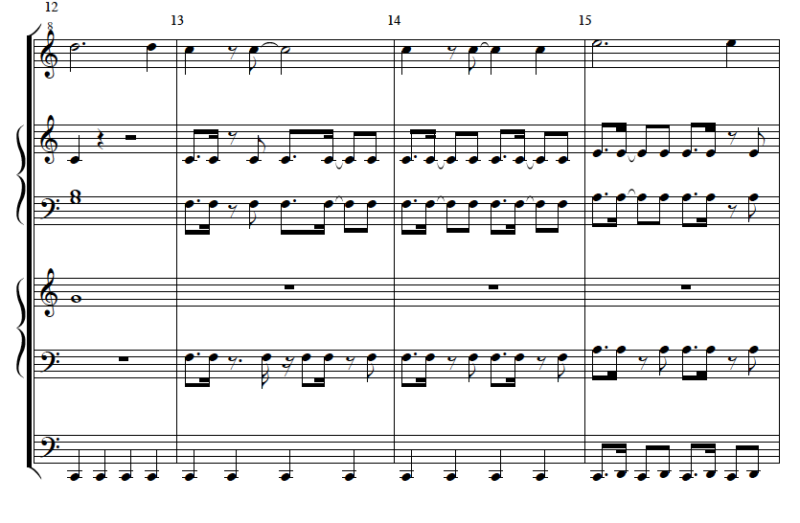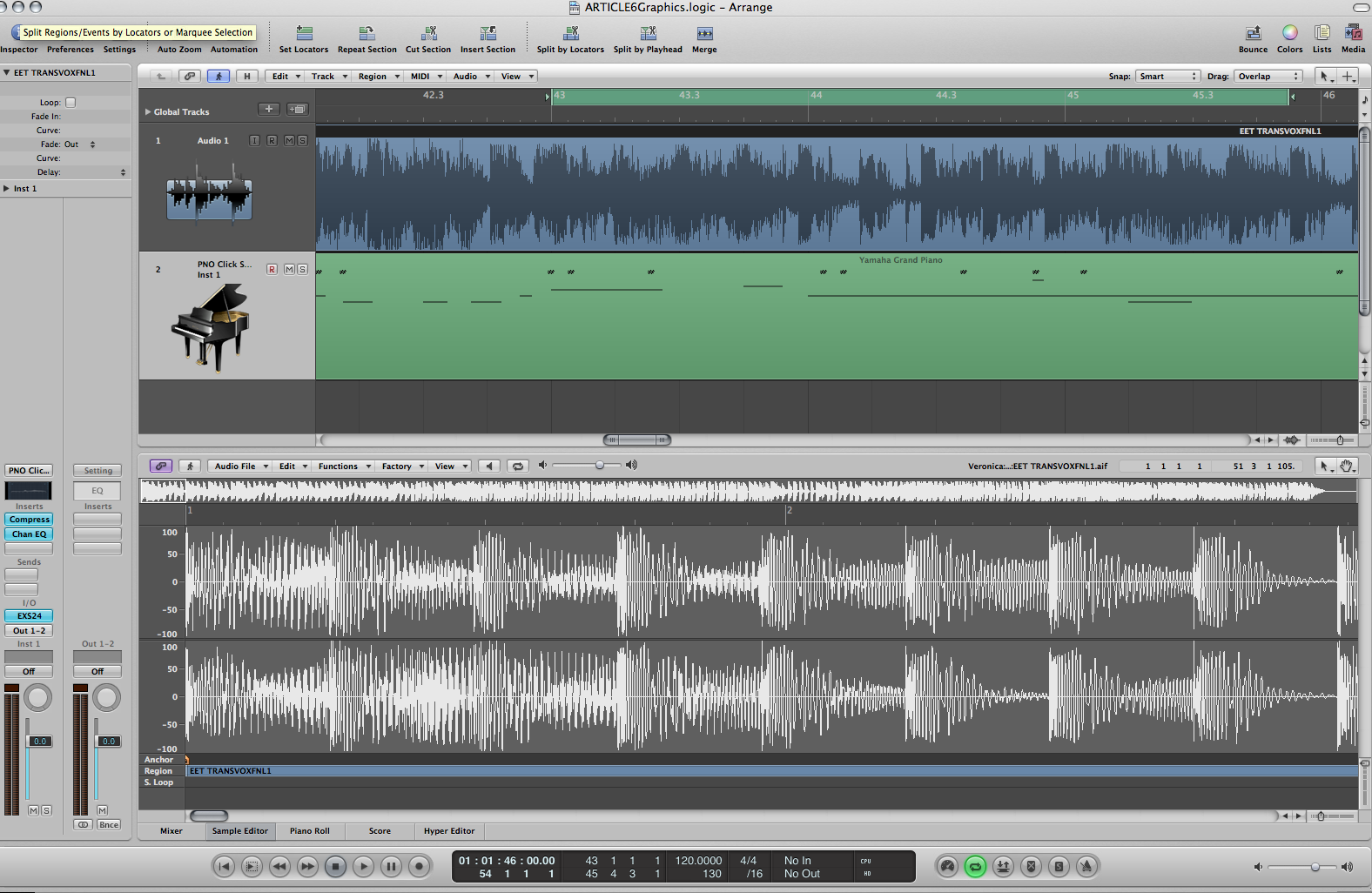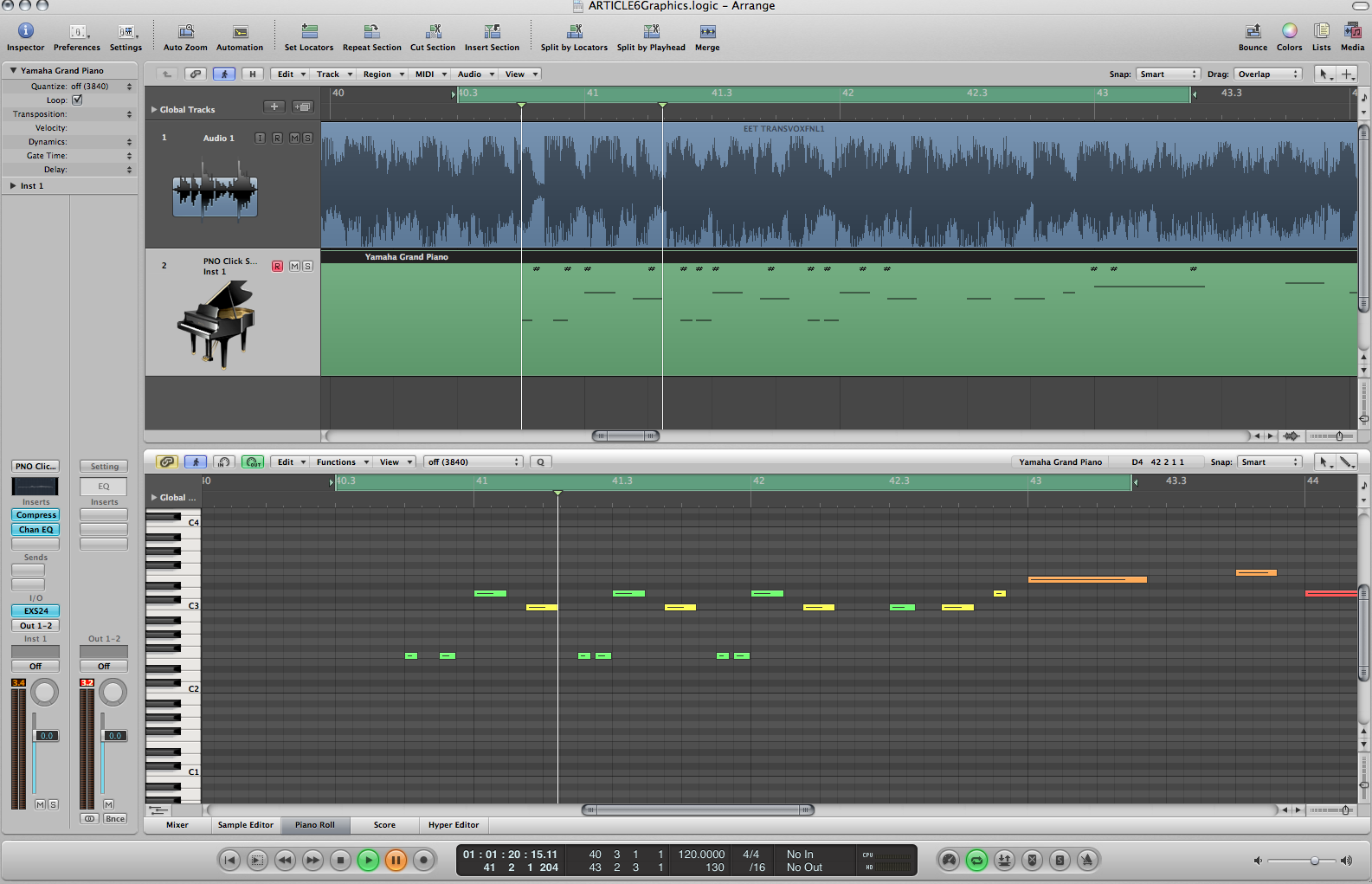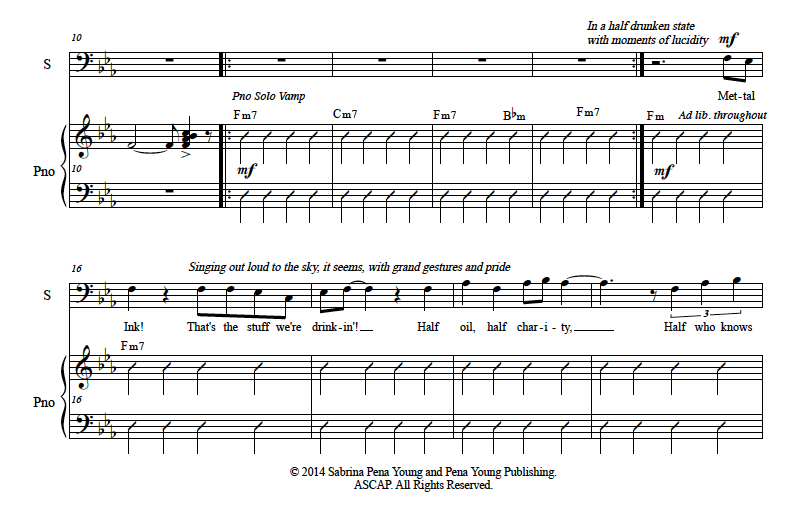By now you are familiar with the transcription process. But the instrumental example we’ve been using is actually pretty short. Most radio-ready tunes are at least three to four minutes long and in some genres, like jazz or classical, a song can go on for twenty minutes or more! Longer songs can be frustrating to transcribe, and they do take much more time to get down on paper, but with the techniques we’ll share in this tutorial you can do it – without your brains exploding!
In this series you have practiced transcription using a sample instrumental track and learned several steps, including:
- Preparation
- Transcribing Drums
- Finding the Key to a Song
- Figuring out the Rhythm Section and Harmony
- Transcribing the Melody
It takes some practice, but the more you transcribe music, the easier it will get. These same steps can be applied to long songs too, with a few small adjustments.
So, how can you conquer transcribing long songs?
Break it Down
It doesn’t do you any good to try to attack an entire long song at one go. Doing so would just stress you out and may result in more than a few broken pencils. Just like we did with the instrumental sample, you need to break any song into shorter segments.
Try to isolate key sections like the introduction, the verses, chorus, bridge, and any outro. Usually the verses and chorus will be almost identical through each playback, with slight variations. Listen for any patterns, whether it’s a chord progression or a rhythm that is repeated. Notice the similar rhythms in this score:

Some quick review tips:
- The bass and drums often have a similar rhythm
- The bass note is often the tonic of the chord
- Use the bass and drum part to set up a skeleton for your transcription
- Make sure your lyrics are correct before transcribing
- Search the Internet for lead sheets that may give you a leg up on your full transcription
- Chord progressions often revolve around I-IV-V chords
- The melody line will have repeated pitch and rhythmic patterns
Warm Up for the Big Time
In light of these tips, listen to the audio example once more and read the transcription. Can you hear where the rhythm is similar? How does the bass note reflect the chord changes? Does the melody line have a recognizable pattern? All these questions will be the same for longer songs.
Click here for the full transcription score.
Super Tools
If you haven’t downloaded a program like Audacity or Garageband for your transcribing, now’s the time. There are also transcription apps and programs like Transcribe! and Anytune which are designed specifically for transcription.
Pro Tip: Some of these programs allow you to slow down the track while you’re listening. With practice, you’ll skills will grow where you don’t use the slow-down tools as much. But even the pros slow down their tracks when the music is moving fast.
While you can use a program like iTunes, it is much easier to work with a program that allows you to loop back short words and phrases easily. And if you have access to Logic, Pro Tools, and other professional DAWs, then you have everything you need at your fingertips.

You can use a program like Logic to help you with your transcription
With Logic or ProTools, which include MIDI, you can set up a project specifically for transcription. One benefit to using this type of program is that you can often print out your transcription directly from the program. You can quickly check your work with playback tools. You can export individual parts or even add new parts.
12 Steps to Software-Assisted Transcribing
The MIDI instruments in a DAW are a transcribers dream! This screenshot shows it in action:

Follow these 12 steps to using MIDI instruments to help your transcription:
- Set up a new project
- Import the song you want to transcribe
- Set up a new MIDI track
- Set Piano as the MIDI track software instrument
- Loop a short section of the song
- Using the “Record” function, record yourself “figuring out” the melody notes on the MIDI piano track
- Playback the section with your piano
- Manually fix wrong notes and rhythms
- Continue tweaking the part until the music matches up perfectly
- Set up new piano tracks or drum tracks for each part (mute what you don’t need to hear)
- Export individual parts if needed
- Print out the result
Lead Sheet or Full Transcription?
How involved you become in your transcription depends on your purpose. Are you trying to catch every nuance of a classic guitar solo for a tribute gig? Or are you looking for the basics of the melody and chords so you can reinterpret the song in your own way?
If the latter is the case, often a simple lead sheet will do. This example contains the basic rhythm, chords, and melody:

Figure out what meets your needs for this particular project before you start to save yourself time.
Musical Form
Looking for musical form—the placement of each section of the song—can save you a lot of time. For example, a song might have an introduction, verse, chorus, verse, bridge, chorus, then end chorus. This is the musical form of the song. Enjoy this quick video brush-up on the topic:
In analyzing traditional classical forms, each section is assigned a letter. Generally speaking, the introduction is called “A”, the verse “B”, the chorus “C”, etc. Each time a section is repeated, it’s given the original letter. So a song that is introduction-verse-chorus-verse-chorus, would have the musical form ABCBC. If there were changes, you would add a number, like “A1” to demonstrate both the similarity and the difference.
Pop Forms
Here’s a great video demonstrating musical form in pop music:
You can use this simple method to break up longer songs forms—ABCBCBCDCC, for example. Then just take your time figuring out each individual section corresponding to a letter.
You have cut your work in half!
Instead of figuring out ten different sections individually, you only have to figure out four sections and repeat them, with only slight adjustments made for changes in the melody line for each verse.
Figuring out longer songs can be as easy as figuring out shorter tunes. It just takes some practice and using some professional tricks like setting up a project in your DAW, using musical form to your advantage, and recognizing patterns. Before you know it, you will be transcribing like a musical professional!
Giveaway Contest!
As mentioned in the first part of this series, Anytune is a fantastic tool to help you transcribe music more easily.
The team behind this excellent software have kindly provided some prizes to accompany our new series, How to Transcribe Music like a Pro.
- To unlock the Pro features of the Anytune iOS app simply follow along with this series and collect the letters of the special unlock code. Then follow the instructions here to redeem the code.
Your third pair of letters: _ _ _ _ _ _ _ _ _ _ A _ _
Look out for the next parts of this series to pick up more letters! - We also have 6 copies of Anytune Mac to give away. For a chance of winning, post a comment on our Facebook page here before the series ends. We’ll pick 6 random entrants to win on August 30th!
Our thanks to Anytune for providing these prizes. And good luck!








